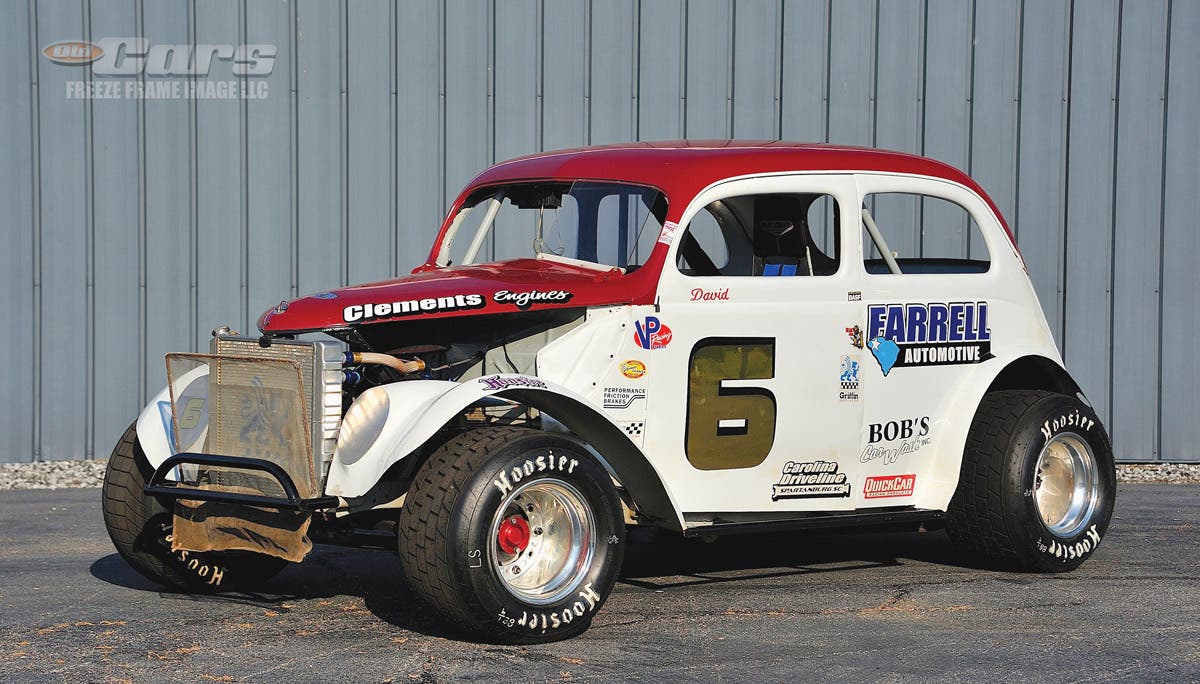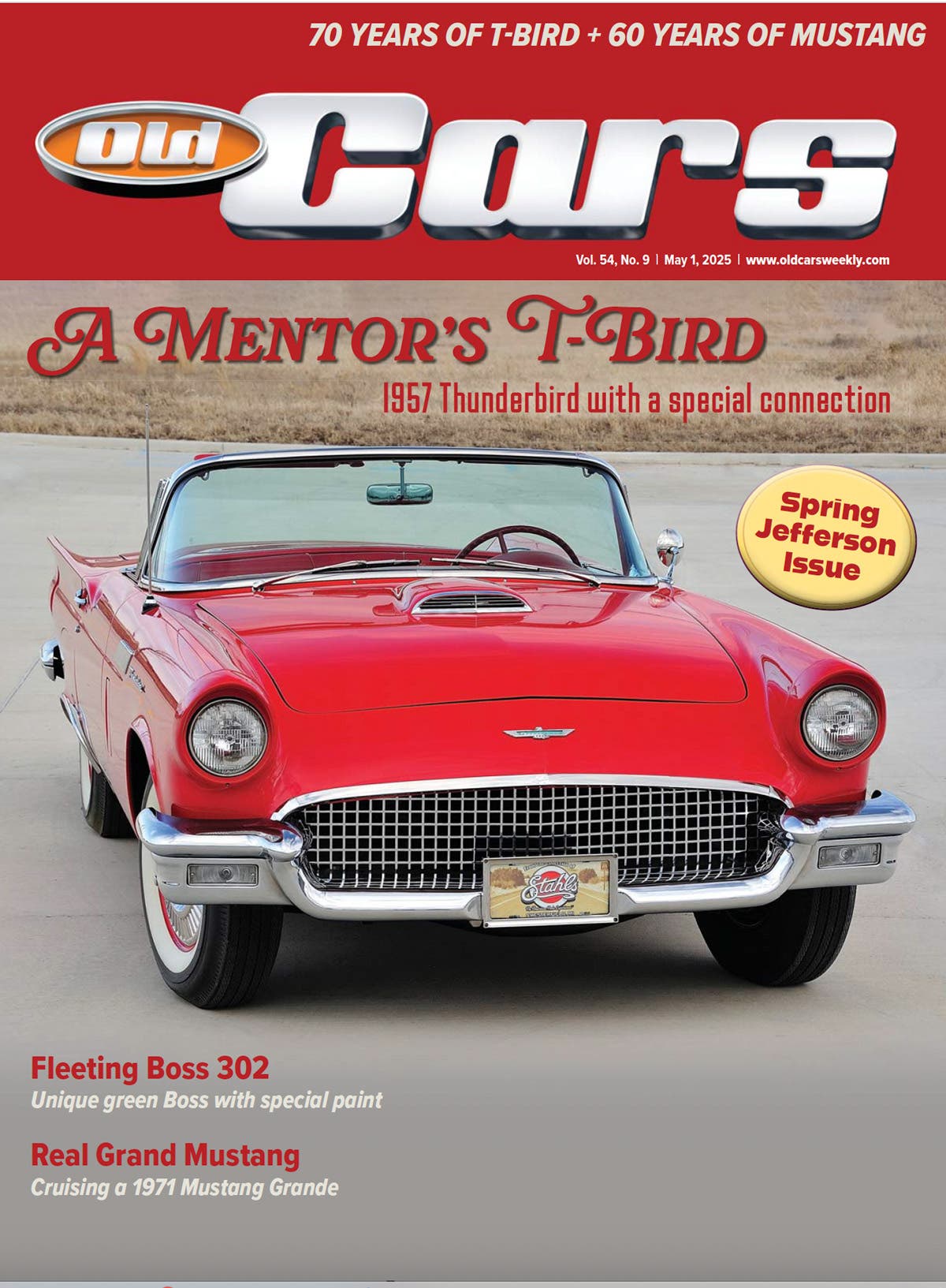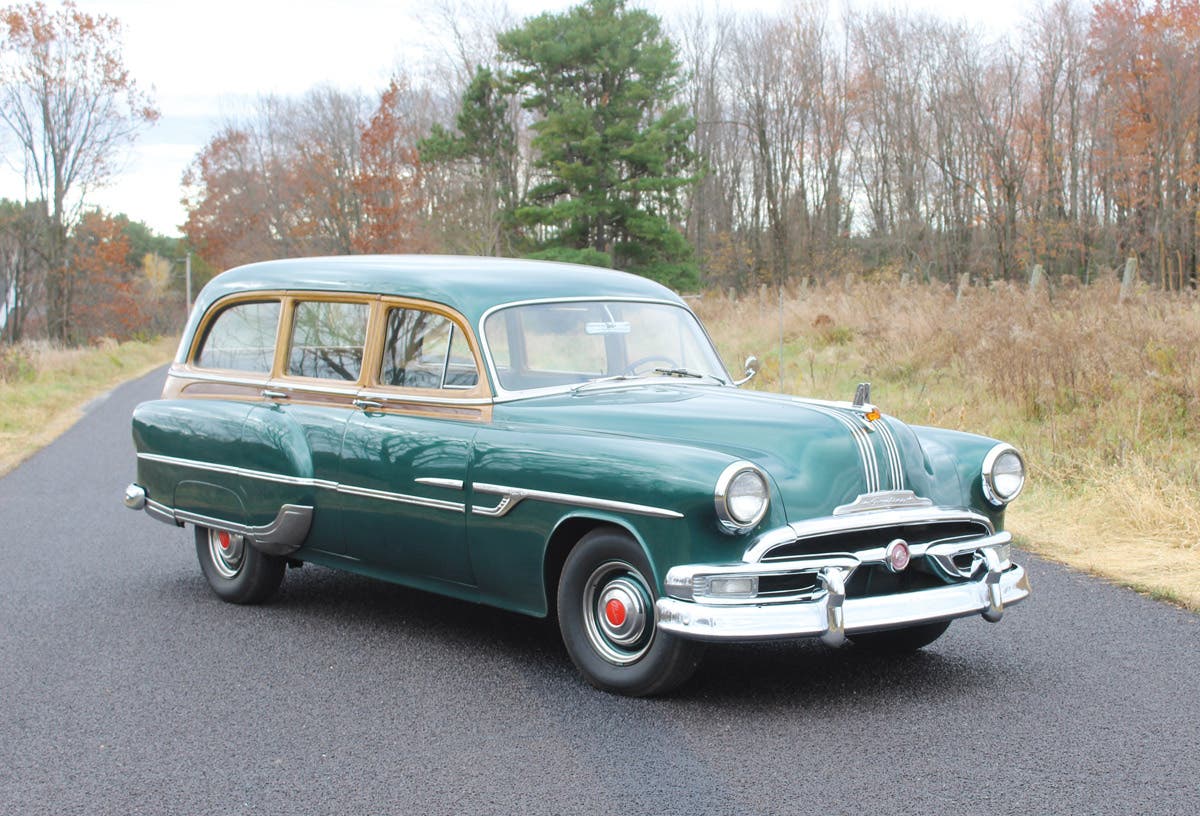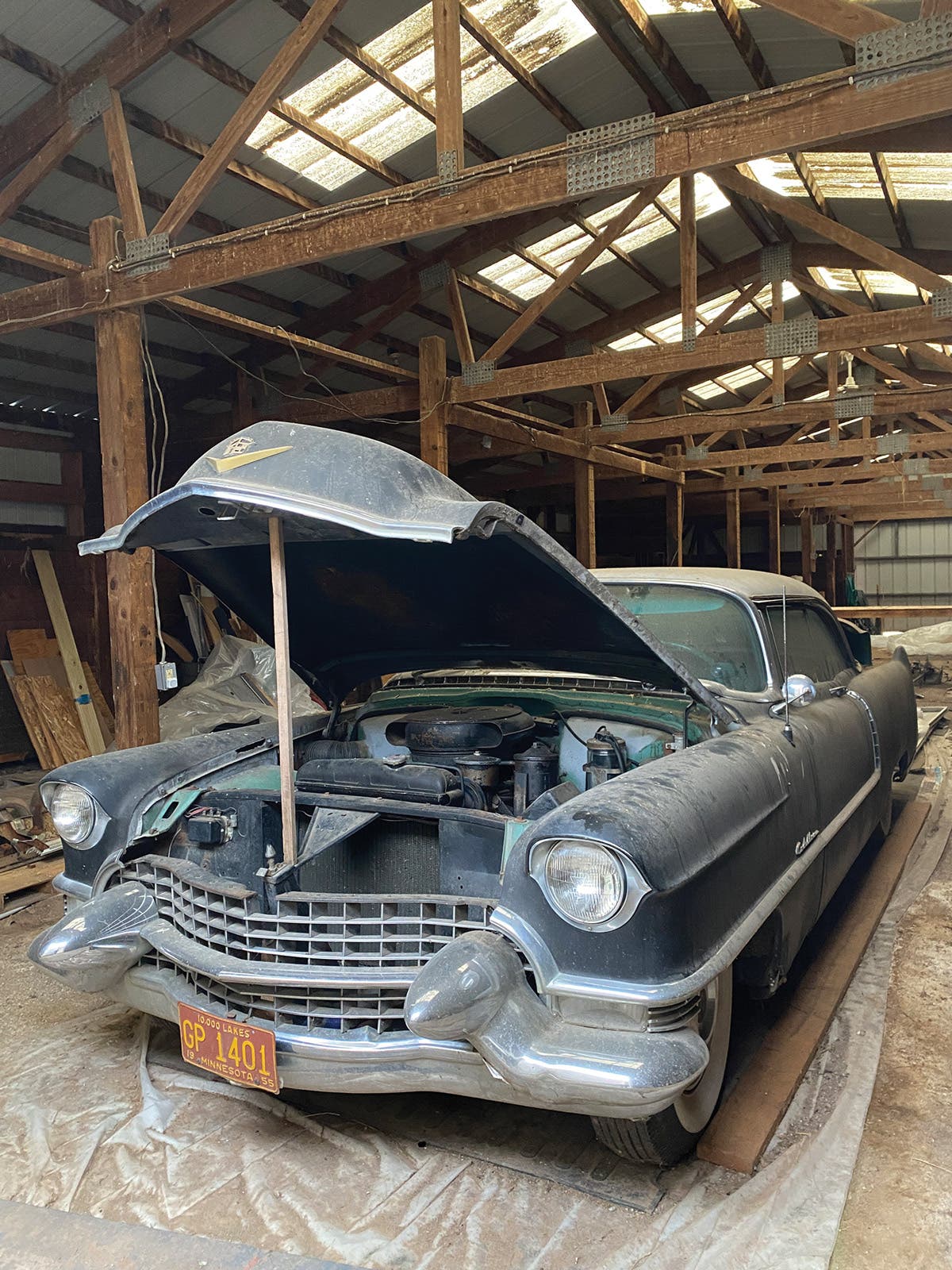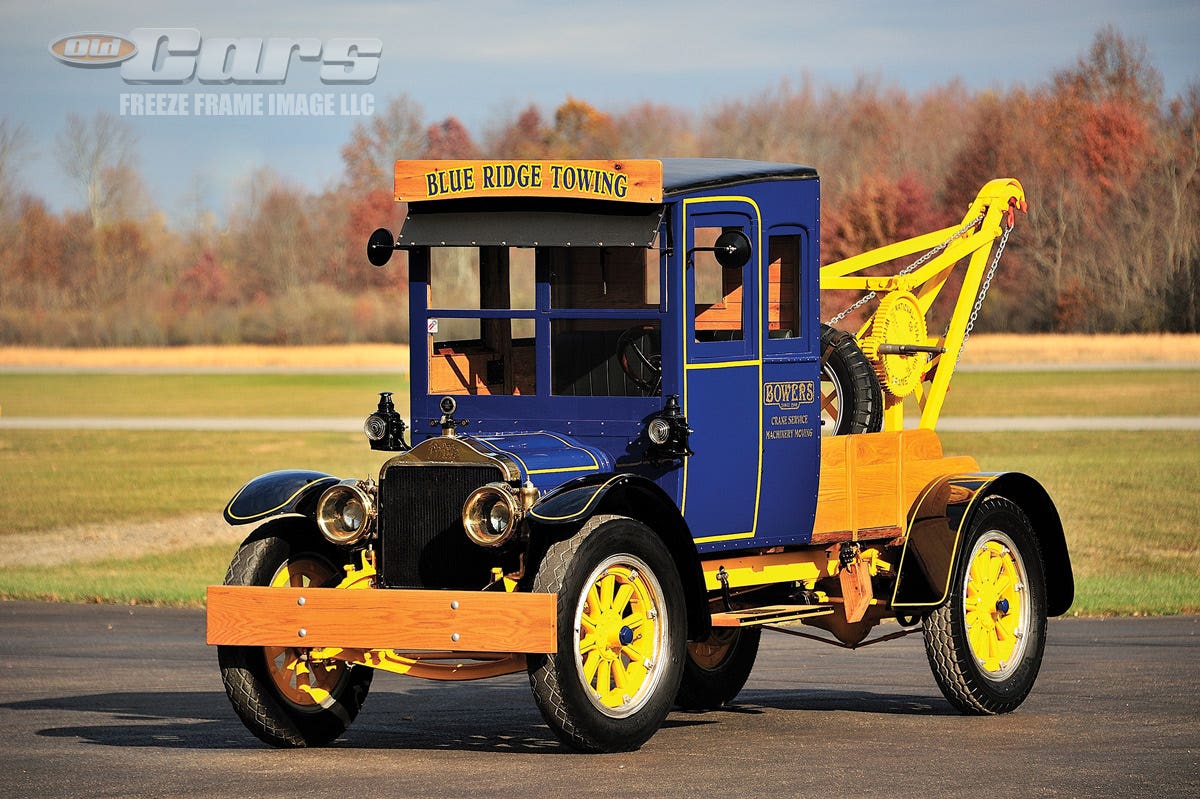Q&A with Kit Foster: April 5, 2012
Q. I would like some help identifying the old cars in this picture. It was taken on a farm about seven miles from the very small town of McKittrick, Calif….
Q. I would like some help identifying the old cars in this picture. It was taken on a farm about seven miles from the very small town of McKittrick, Calif. The man pictured is my dad, Hyman Wells (deceased). The boys are my brother, James Wells, and me. Any help to identify the cars would be much appreciated.
Murray Wells, Fullerton, Calif.
A. The car immediately behind you is pretty easy to recognize. The distinctive grille belongs to a 1932 or ’33 Rockne. The Rockne was a “companion” make introduced by Studebaker in February 1932. Intended to sell in the low-priced Ford-Chevrolet market, its namesake was famed Notre Dame football coach Knute Rockne, a close friend of Studebaker president Albert Erskine. Rockne, the coach, was given the title of sales manager for the new make, but his death in a plane crash before the car’s introduction did not bode well for the enterprise. After disappointing sales, the Detroit factory where the car was made was closed down on Easter weekend 1933. Total production was 23,201 cars.
The touring car in the background is not so easy. It’s not in sharp focus and looks like many mid-sized cars of the early 1920s. One clue is the window pattern in the rear panel of the top. The use of two horizontal oval windows was not common, and this should narrow the search. My first browse through the Spotter’s Guide, however, came up with just the Coats Steamer, built in Sandusky, Ohio, in 1922 and ’23 (a long shot), and Crow-Elkart, the Elkhart, Ind., car that was somewhat more prolific. Other suggestions are welcome.
-------------------------------------------------------------
Q. I have a Packard #PA324349 Purolator throw-away-type oil filter service unit (without lines and brackets). Would you know if this is to service factory equipment (standard or optional) or a dealer-installed accessory?
John Chalmers, Cashtown, Pa.
A. I don’t know off-hand, but I expect some of our readers do. Two of my Packard references mention that Packard made oil filters standard in 1928, and I also see that Packard-Purolator decals can be purchased on eBay, which is further evidence that they offered Purolator filters.
-------------------------------------------------------------
Q. I know where there is a 1981 Pontiac Formula with T-tops standing in the woods. It has no bird on the hood or any markings saying it is a Firebird. Did a “plain” Formula exist? I can’t find any on the internet. Is it a rare car or just another GM?
Gene J. Woller, Merrill, Wis.
A. I see the Formula listed as a Firebird sub-series from 1970 to 1981. Initially it was called “Formula 400,” from its 400-cid, 330-bhp engine. The “400” was dropped from the name in 1972, when the standard engine for all Firebirds except the Trans Am became a 250-cid inline six. By 1981, the Formula could be had with 265-, 301- or 305-cubic inch V-8s. I don’t see any pictures of Formula Firebirds with bird hood decals, and I can’t see if “Firebird” appears on the outside. All of them seem to have a prominent “Formula” decal somewhere. Formula production in 1981 was 5,927 cars, the lowest of any of that year’s Firebird variants. The combined total of 1981 Trans Am and Trans Am turbo cars was 33,493, more than 50 percent higher than the base Firebird coupe.
-------------------------------------------------------------
Q. I am looking at buying a 1919 Dodge Rex coupe. It has a “fatman” steering wheel and Kelchase spoke wheels. I can’t seem to find any information on the car and am wondering if you can help.
Ken Decker, Manitowoc, Wis.
A. I can help a little bit. The Dodge “Rex” models are confusing because they were also known by another name. There was a roadster/coupe version and also a touring/sedan model. The “Standard Catalog of American Cars 1805-1942” lists them from 1917 to 1919. They were, in effect, early “hardtop” styles, in that the side windows and center pillars could be removed, leaving the top in place, or the roof could be lifted off completely. “The Dodge Story” by Thomas A. McPherson calls them “convertible coupe” and “mid-door convertible sedan,” respectively. The wire wheels were standard equipment. Both models were discontinued by 1920. Unfortunately, I don’t see any production figures for either type. There were 62,000 Dodges of all styles built in 1919. I suspect most of them were either touring cars or roadsters with conventional folding tops.
To submit questions to this column: E-mail angelo.vanbogart@fwmedia.com or mail to: Q&A, c/o Angelo Van Bogart, 700 E. State St., Iola, WI 54990-0001.
Got Old Cars?
If you don't subscribe to Old Cars Weekly magazine, you're missing out on the only weekly magazine in the car hobby. And we'll deliver 54 issues a year right to your mailbox every week for less than the price of a oil change! Click here to see what you're missing with Old Cars Weekly!
More Resources for Car Collectors:
- Classic car price guides, research, books, back issues of Old Cars Weekly & more
- Get expert restoration advice for your classic car
- Get car pricing, data and history all in one place
- Sign up for Old Cars Weekly's FREE email newsletter
- Need to buy or sell your classic car? Looking for parts or memorabilia? Search our huge online classified marketplace



